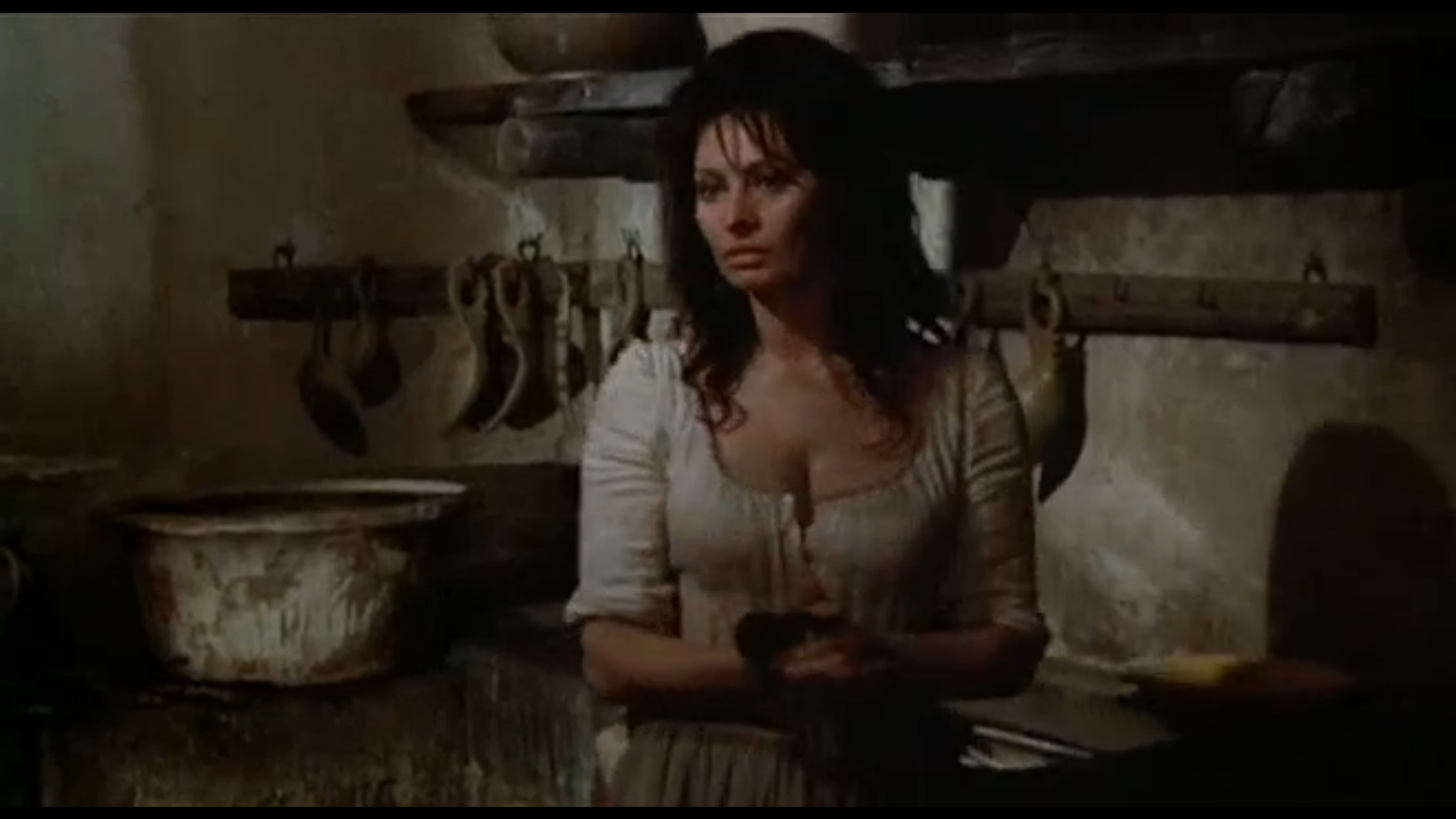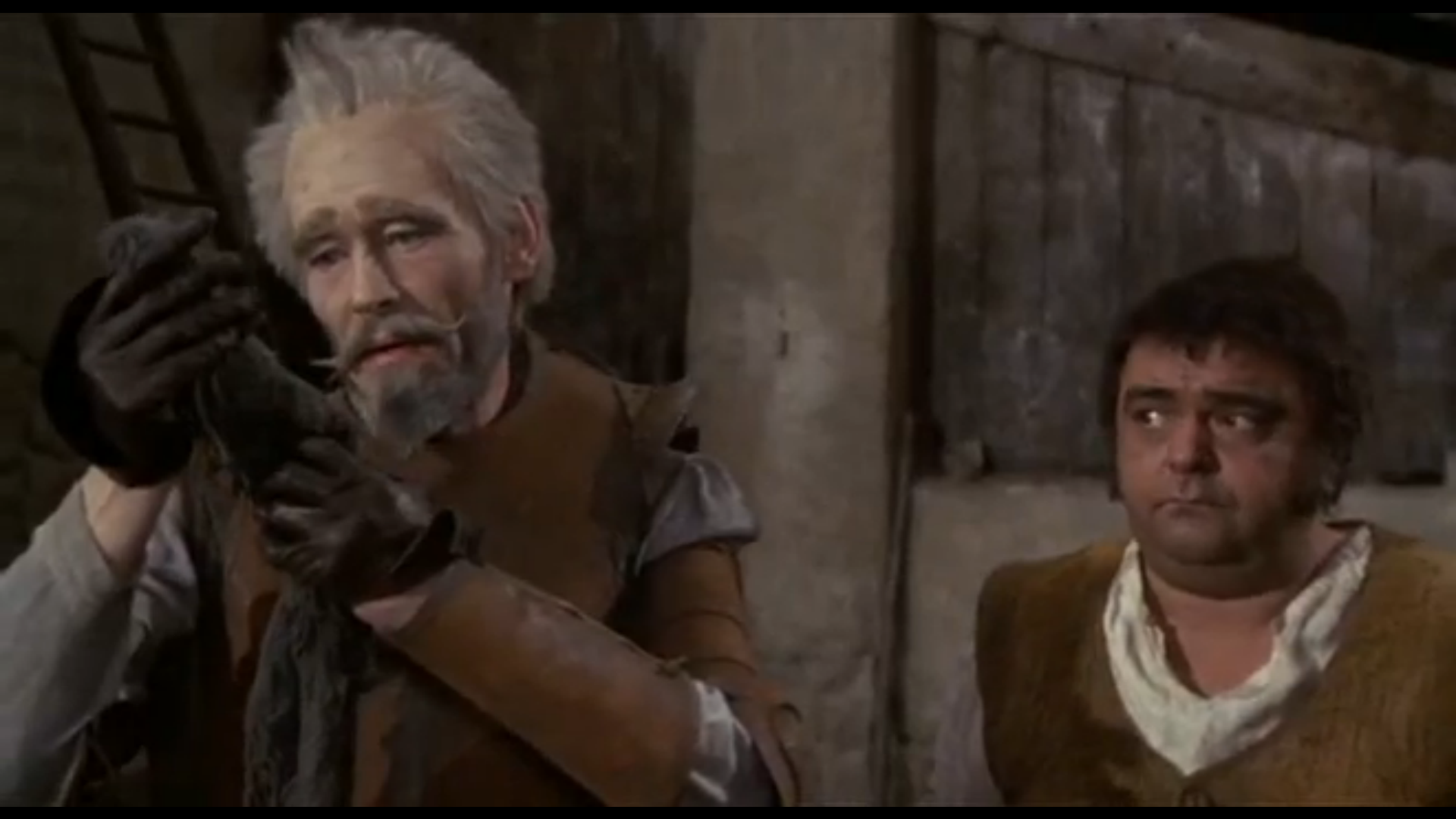 Home Page
Home Page
A Tale of Two Quixotes
I've embedded two versions of the the Don Quixote story:
the first is a movie loosely based on the novel; the second is a
stage version of the 1965 musical, Man of La Mancha.
You might want to go ahead and watch the 1972 film version with
Peter O'Toole and Sophia Loren.

The original Don Quixote was written about a hundred
years into the Spanish Inquisition. The first novel was
published in 1605, during the period when Shakespeare was active
in England, and the second one was published 10 years later. As
the musical points out, Cervantes himself had some trouble with
the Inquisition, and it shows up in the novel when the local
priest examines his books to see which ones to save, and which
ones to burn. The musical was written in New York during
the swinging 60s, so the two versions give us an experiment in
how different eras treat a given character. It's a great
setup for a comparison-contrast research paper or article.
The musical is a very truncated version of the tale, which is
understandable. There is simply no way to tell the whole
story in a 2 or 3 hour production. What is remarkable is
the whole subplot that the musical introduces to the
whole story -- Aldonza, a tavern wench whom Quixote mistakes for
the lady Dulcinea, who never actually showed up in the
novels. This new relationship becomes the lynchpin for the
whole tale. The musical introduces a narrative frame for
the story; it is a play within a play, the larger play being
about the arrest of Cervantes and him imprisonment waiting trial
before the Inquistion. He and his servant keep the other
criminals in the cell at bay by staging the story of Don
Quixote. In the musical, Cervantes himself plays Don
Quixote, and his servant plays Sancho Panza.
Cervantes was responding to and satirizing the endless
chivalric romances of his era, especially the Amadís Cycle.
The first four books of the cycle are entitled Amadís de Gaul.
The authorship and even the original language of Amadís de Gaul
are uncertain; the best guess is that Montalvo was the final
redactor of material that had already been in circulation
(Pierce 17, Barber 1-6). Montalvo probably composed book four
with less reliance on such materials (Barber 3). The earliest
extant edition of the first four books was published in 1508.
Montalvo published book V, Sergas de Esplandián, in 1510
(Pierce 12). Páez de Ribera added a sixth book that same year.
Feliciano de Silva wrote books seven (1514), nine (1530), ten
(1532), and eleven (1535). Juan Díaz added book eight to the
series in 1526, and a final twelfth book rounded the series off
to a proper epic number in 1546, with the author possibly being
Pedro de Luján (O'Connor 6). These are the books being
discussed for burning in the novel. You may not have heard
of these works, but they've had an impact - Sergas de
Esplandián introduces Amazons who follow their queen
Califia on flying griffins in their land on the far side of the
New World, California.
The premise of both novel and musical is, what would happen if
somebody read such adventure novels so much he lost touch with
reality? How would he deal with the ordinary world, and
how would the ordinary world deal with him? In both
versions, people react in various ways to Alonso Quixano's
delusion that he's Don Quixote. There are
- those who try to reclaim him to sanity (family, priest,
doctor),
- those who humor him and amuse themselves by going along
(many of the people he meets), and
- those who are caught up in the madness (Sancho and, in the musical, Dulcinea).
Another big difference between the novels and the musical is
the endings. Alonso dies at the end of the second novel
and at the end of the musical. The difference comes in the
manner of his death. In both novel, he regains his sanity
at the end. When he dies, it's as Alonso Quixano, happily
of sound mind if not body. In the musical, Aldonza comes
to his deathbed and sings to him until he again goes insane,
believes he is Don Quixote, and dies.
The remarkable thing about these different endings is that each
work sees its own ending as a triumph. In the novel,
Alonso dies in the world of reality, as affirmed by family,
society, church, and state. Therefore, he is able to die
in a state of grace, confessing his sins to the priest and
receiving absolution. He could not have done these things
as Don Quixote.
In the movie, on the other hand, he becomes at the end his true
self, Don Quixote. He dies in a state of grace because he
is at the end true to himself and his vision, regardless of what
family, friends, church, and state want him to be. What
happened between 1605 and 1965 that so profoundly altered the
story? My theory is that is was the Romantic Era made the
critical difference in the approach to Quixote. The
Romantic Era was a time for re-evaluating older figures.
William Blake, for example, had a very different take on Satan
in Paradise Lost. He thought Satan to be the real
hero of the epic and said that Milton was “a
true poet & of the Devils party without knowing
it.” The Romantics rebelled the strictures of the
Enlightenment, with its focus on rules and laws. For many Romantics, freedom is to be found in
defying the rules and conventions that others have laid
down. This freedom is to be found in saying "No" to
authority. The American and French Revolutions, though
products of the Enlightenment, helped inspire many individual
declarations of independence among the Romantics. And
who better represents the NO
to authority than Satan? Thus Blake, like many others,
sees Satan as something of a role model.
The Romantics also looked at God
differently. They didn't place much stock in tradition,
ritual, or authority, so the traditional church came in for
harsh criticism. God's highest attribute changed as
well. In the Enlightenment,
the highest human and divine attribute was reason.
For the Romantic period, the highest human and divine attribute
was creation, the
combination of imagination, will
and energy. (Imagination,
will, and energy were also high on the list of Romantic
virtues).
"Does a firm perswasion that a thing is so, make it so?"
He replied: "All poets believe that it does, & in ages of imagination this firm perswasion removed mountains; but many are not capable of a firm perswasion of any thing."
William Blake. The Marriage of Heaven and Hell. 12.
Don Quixote also undergoes a re-evaluation in the wake of the
Romantic Era. The new perspective on God would also apply
to Quixote; he is not longer simply out of step with those in
the real world; he has the potential to re-create the world
according to his own vision. Romantic projection
is a Romantic notion. When a movie projects on the
otherwise blank screen, it creates a reality from within
itself. The romantic believes that the vision he has in
himself can be projected onto the world and made into
reality. The ordinary individual must accommodate
himself/herself to the external world. The visionary bends the
world to his/her will. This power is especially great in
dealing with other people. The visionary who can
communicate with others effectively can transform the world, for
good or for ill. Romantic projection can produce a Hitler
and Stalin as easily as a Churchill and Roosevelt.
That brings us back to the death scene. When we first met
Aldonza, she was working in a roadside in a roadside inn,
cooking, cleaning, and turning tricks. She hated every one
and every thing, especially herself. She saw herself the
way everybody else saw her -- a fallen woman, selling her body
to the dregs of society that came to the inn on a dusty country
road. At one point, Don Quixote sends Sancho to her to request a
token from her; she responds by giving him a disgusting
washcloth, Don Quixote sees only the finest gossamer.


Of course, the washcloth turns out to be a token of her after
all; the dirty, overused washcloth is metonymic for the dirty,
overused Alonza. Yet Don Quixote sees gossamer and the
beautiful Dulcinea del Toboso: "... her name is Dulcinea, her
country El Toboso, a village of La Mancha, her rank must be at
least that of a princess, since she is my queen and lady, and
her beauty superhuman, since all the impossible and fanciful
attributes of beauty which the poets apply to their ladies are
verified in her; for her hairs are gold, her forehead Elysian
fields, her eyebrows rainbows, her eyes suns, her cheeks roses,
her lips coral, her teeth pearls, her neck alabaster, her bosom
marble, her hands ivory, her fairness snow, and what modesty
conceals from sight such, I think and imagine, as rational
reflection can only extol, not compare." He sees something
in here she can't even imagine in herself. Yet over the
course of the musical, she has come to see herself through his
eyes. That is why she needs him to remember the Dulcinea
he created with his own imagination. By dying as Don
Quixote, he not only has recreated himself; he has recreated
her. And the vision is reciprocal; she returns the favor
by seeing the Don Quixote inside the dying Alonso Quixano.
That's what gives the vision such power: it is contagious and
can spread far beyond the original visionary.
Home Page
